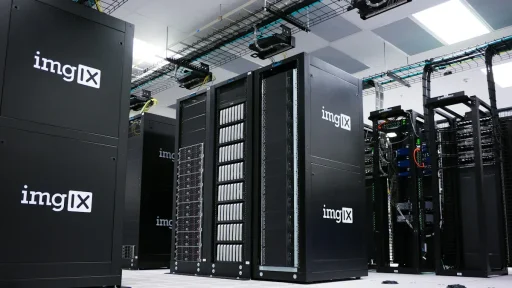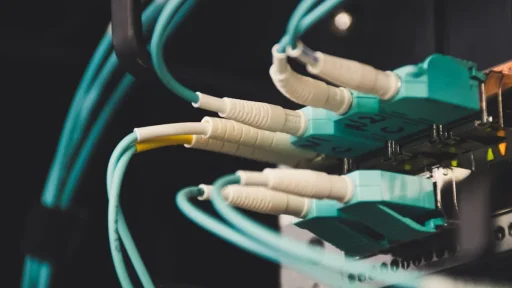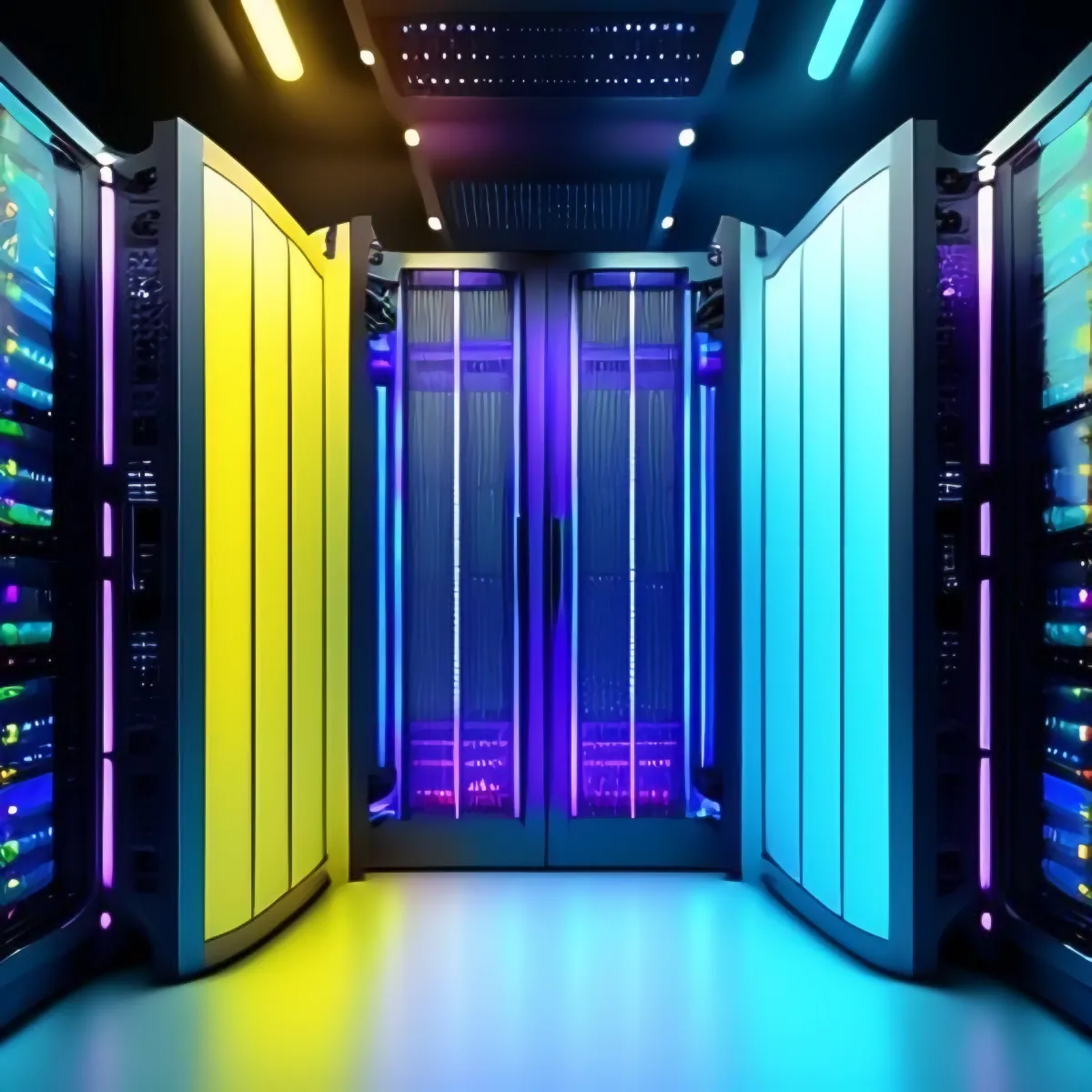

Choosing the right storage for your server impacts performance, reliability, and cost. SSDs deliver unmatched speed and low latency, making them ideal for high-performance tasks. For example, NVMe SSDs are up to 35 times faster than HDDs, with random access times below 0.1 ms compared to HDDs’ 2.9–12 ms. On the other hand, HDDs offer cost-effective, high-capacity storage, perfect for archival needs.
Recent trends show a shift toward SSD adoption:
36% of organizations now standardize on SSDs for server environments.
17% use SSDs alongside HDDs.
21% plan to adopt SSDs within two years.
Understanding these differences helps you optimize server storage for your workload.
Key Takeaways
SSDs are super fast and great for tasks like databases.
HDDs are cheaper and hold more data, good for saving files.
More companies now use SSDs, with 36% making them standard.
SSDs don’t have moving parts, so they last longer than HDDs.
For fast data use, SSDs are much quicker and more reliable.
HDDs are still useful for big storage because they cost less.
Mixing SSDs and HDDs gives both speed and saves money.
Think about your needs to pick SSDs for speed or HDDs for cost.
Understanding Server Storage: SSDs and HDDs
What is a Server SSD?
Components and functionality
Server SSDs rely on advanced storage technology to deliver high performance. They use flash memory, a non-volatile medium that retains data even without power. A flash controller manages the flow of data between the server and the NAND flash memory, ensuring efficient operations. SSDs come in various form factors, such as 2.5-inch drives, M.2 modules, and U.2 drives, to suit different server configurations. These drives excel in speed, reliability, and low latency, making them ideal for demanding workloads.
Key Component/Functionality | Description |
|---|---|
Flash Memory | Non-volatile storage media that stores persistent data. |
Flash Controller | Manages data flow to and from the NAND flash memory. |
Form Factors | Various physical sizes and shapes for different applications. |
Performance | Significantly faster read/write speeds compared to HDDs. |
Reliability | No moving parts, reducing the risk of mechanical failure. |
Latency | Lower latency allows for efficient handling of heavy read and random workloads. |
Use Cases | Suitable for high-performance servers, virtual desktop infrastructure, and transaction-heavy databases. |
Benefits of SSDs in server environments
SSDs offer several advantages for server storage. Their lightning-fast read and write speeds reduce latency, enhancing server responsiveness. Unlike HDDs, SSDs have no moving parts, making them more resistant to physical shocks and vibrations. This durability is crucial in environments with multiple drives, where vibrations can degrade performance. SSDs also consume less power, contributing to energy efficiency in data centers.
What is an HDD Server?
Components and functionality
HDD servers use traditional storage technology to provide cost-effective, high-capacity solutions. The primary function of an HDD server is to read and write data using a spinning disk platter and a read/write head. These components operate through electromagnetism to store and retrieve information. HDDs connect to the server’s motherboard via interfaces like SATA, SAS, or iSCSI. They are non-volatile, retaining data even when powered off.
HDDs provide significant storage capacity, often up to 4 TB or more.
The mechanical design makes them slower than SSDs, with higher power consumption.
They are more vulnerable to physical damage due to their moving parts.
Benefits of HDDs in server environments
HDDs remain a popular choice for server storage due to their affordability and large storage capacities. They are well-suited for archival storage, backups, and budget-conscious setups. Despite their slower speeds, HDDs can handle various server configurations effectively, making them a versatile option for many businesses.
HDD vs SSD: Key Technological Differences
Flash memory vs. spinning disks
The fundamental difference between SSDs and HDDs lies in their storage technology. SSDs use flash memory, which eliminates the need for moving parts. This design allows for faster data access and lower latency. In contrast, HDDs rely on spinning disks and mechanical read/write heads, which slow down data retrieval. While HDDs offer higher storage capacities at a lower cost, their mechanical architecture limits their speed.
Impact on server performance and reliability
SSDs significantly outperform HDDs in speed and reliability. Their lack of moving parts ensures quicker data access and reduces the risk of mechanical failure. This makes SSDs ideal for performance-critical applications like databases and virtualization. HDDs, while cost-effective, are more prone to wear and tear, especially in high-demand environments. However, they remain a practical choice for less intensive workloads requiring large storage capacities.
Comparing SSDs and HDDs for Server Storage
Performance
Speed and latency differences
When it comes to speed and latency, SSDs outperform HDDs by a significant margin. SSDs use flash memory, which allows for faster data access and lower latency. In contrast, HDDs rely on spinning disks and mechanical read/write heads, which slow down operations. For example, NVMe SSDs can achieve sequential read speeds of up to 3,400 MB/s, while enterprise HDDs like the Seagate EXOS 2X18 max out at 554 MB/s. The table below highlights the speed differences across various storage types:
Storage Type | Model | Sequential Read/Write Speed |
|---|---|---|
Enterprise HDD | Seagate EXOS 2X18 (18TB) | Up to 554 MB/s |
SATA SSD | Micron 5200 ECO (7.68TB) | 540/520 MB/s |
NVMe SSD | Western Digital PC SN720 | 3,400/2,800 MB/s |
PCIe Gen 5 SSD | Crucial T700 (1TB) | 11,700/9,500 MB/s |
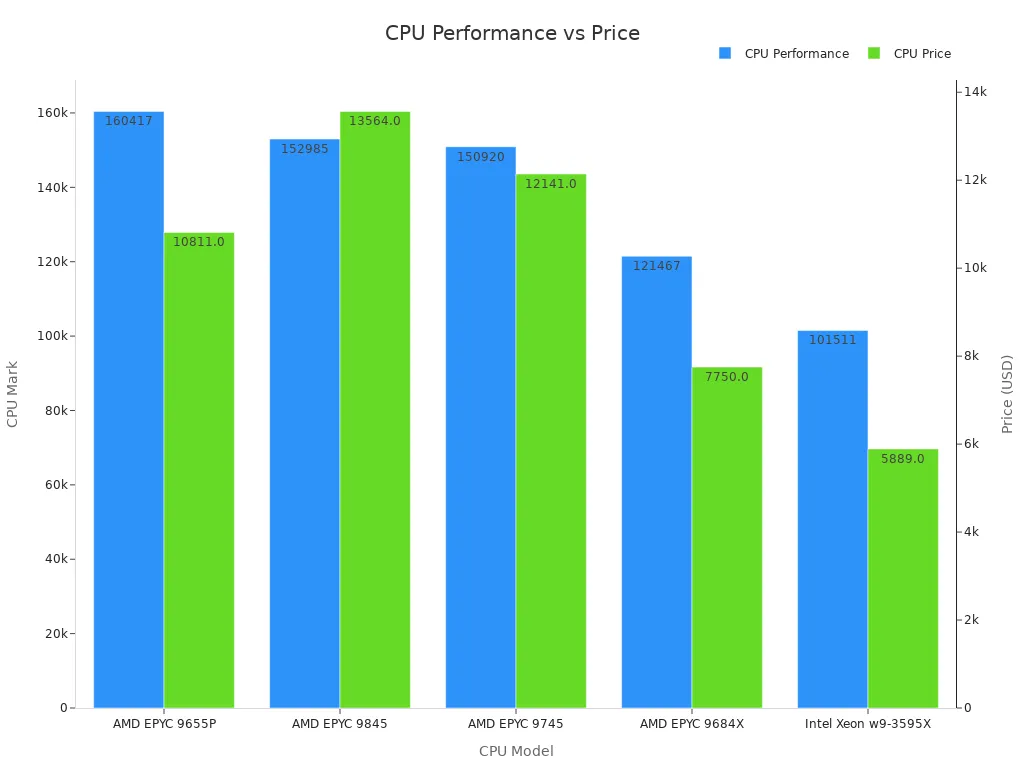

SSDs also excel in random access tasks, delivering over one million IOPS with access times below 0.1 ms. In comparison, enterprise HDDs have access times ranging from 2.9 ms to 12 ms. This speed advantage makes SSDs ideal for workloads requiring high server performance, such as database operations and virtualization.
IOPS and data transfer rates
Input/output operations per second (IOPS) and data transfer rates are critical metrics for evaluating storage performance. SSDs dominate in both areas. For instance, NVMe SSDs can handle significantly more IOPS than HDDs, ensuring smoother performance for demanding applications. HDDs, while capable of handling moderate workloads, cannot match the efficiency of SSDs in high-demand server environments.
Storage Capacity
Maximum capacities of SSDs and HDDs
HDDs have traditionally offered higher storage capacities than SSDs. Modern enterprise HDDs can reach up to 22TB for 3.5-inch drives, while smaller 2.5-inch HDDs max out at 5TB. However, SSDs have made significant strides in recent years. Some server SSDs now offer capacities as high as 61.44TB, surpassing HDDs in this regard. The table below compares the maximum capacities of these storage types:
Storage Type | Maximum Capacity |
|---|---|
HDD (3.5-inch) | 22TB |
HDD (2.5-inch) | 5TB |
SSD | 61.44TB |
Scalability for server storage
HDDs remain a cost-effective option for scaling server storage, especially for archival purposes. However, SSDs provide a better balance of speed and capacity for applications requiring high storage performance. As SSD capacities continue to grow, they are becoming increasingly viable for large-scale server deployments.
Durability and Reliability
Wear and tear in SSDs vs. HDDs
The durability of a storage device directly impacts its reliability in server environments. SSDs have no moving parts, making them less prone to mechanical failure. In contrast, HDDs rely on spinning disks and read/write heads, which are more susceptible to wear and tear. Over three to five years, SSDs exhibit a failure rate of just 0.5 out of 100, compared to 3.5 out of 100 for HDDs.
Suitability for high-demand server environments
SSDs are better suited for high-demand server environments due to their longer lifespan and higher reliability. Enterprise SSDs can last up to 10 years, while HDDs typically last 3–5 years. Additionally, SSDs are more resistant to temperature fluctuations, which can significantly impact server performance. The table below summarizes key reliability metrics:
Reliability Metric | Enterprise HDD | Enterprise SSD |
|---|---|---|
Expected Lifespan | 3–5 years | Up to 10 years |
MTTF (Mean Time To Failure) | 2.5 million hours | Varies by NAND type |
Temperature Sensitivity | 30% higher failure rate per 5°C above 40°C | More temperature resistant |
For high-demand workloads, SSDs provide the durability and reliability needed to maintain consistent server performance over time.
Power Consumption
Energy efficiency of SSD servers
SSDs are highly energy-efficient, making them a smart choice for modern server storage solutions. Their design eliminates moving parts, which reduces power consumption significantly. When idle, SSDs consume less than 2 watts, and even under full load, they use less than 9 watts. This efficiency helps lower operational costs in data centers, where energy usage is a critical factor. By choosing SSDs, you can reduce your server’s environmental footprint while maintaining high performance.
Drive Type | Idle Power Consumption | Active Power Consumption |
|---|---|---|
SSD | <2W | <9W |
HDD | 4-6W | 8-12W |
Tip: If your workload involves high-performance tasks and energy efficiency is a priority, SSDs offer a sustainable server storage solution.
Power usage in HDD servers
HDDs consume more power due to their mechanical components. When idle, they require 4–6 watts, and during active operations, their power usage ranges from 8–12 watts. This higher energy demand can increase operational costs, especially in large-scale server deployments. However, HDDs remain an optimal HDD choice for archival storage or backup systems, where performance demands are lower, and cost savings take precedence.
HDDs require 4–6 watts when idle.
HDDs require 8–12 watts at full load.
If your server storage needs focus on large capacities rather than energy efficiency, HDDs may still be a practical option.
Cost
Price per GB for SSDs vs. HDDs
When comparing costs, HDDs are far more economical than SSDs. The price per gigabyte for HDDs averages $0.019, while SSDs cost around $0.111 per gigabyte. This makes HDDs appealing for budget-conscious server deployments, especially when large storage capacities are required. For example, a 1TB HDD costs approximately $19, whereas a 1TB SSD costs $111. The table below highlights the cost differences:
Storage Type | Price per TB | Price per GB |
|---|---|---|
SSD | $111 | $0.111 |
HDD | $19 | $0.019 |
Note: HDDs provide a more economical solution for large-scale server storage, making them ideal for archival and backup purposes.
Long-term cost implications for server storage
While SSDs have a higher upfront cost, their long-term benefits can offset the initial investment. SSDs consume less power, reducing energy bills over time. Their durability also minimizes replacement costs, as they last longer than HDDs. However, HDDs remain the optimal HDD choice for scenarios where cost savings outweigh performance needs. For large-scale archival storage, HDDs continue to be a cost-effective server storage solution.
The cost-per-terabyte difference between SSDs and HDDs is expected to maintain a ratio of 6:1 or higher through 2027. This indicates that SSDs will remain significantly more expensive than HDDs in the foreseeable future. If your workload prioritizes performance and reliability, SSDs justify their higher price. For budget-conscious setups, HDDs offer unmatched affordability.
Use Cases for SSDs and HDDs in Servers
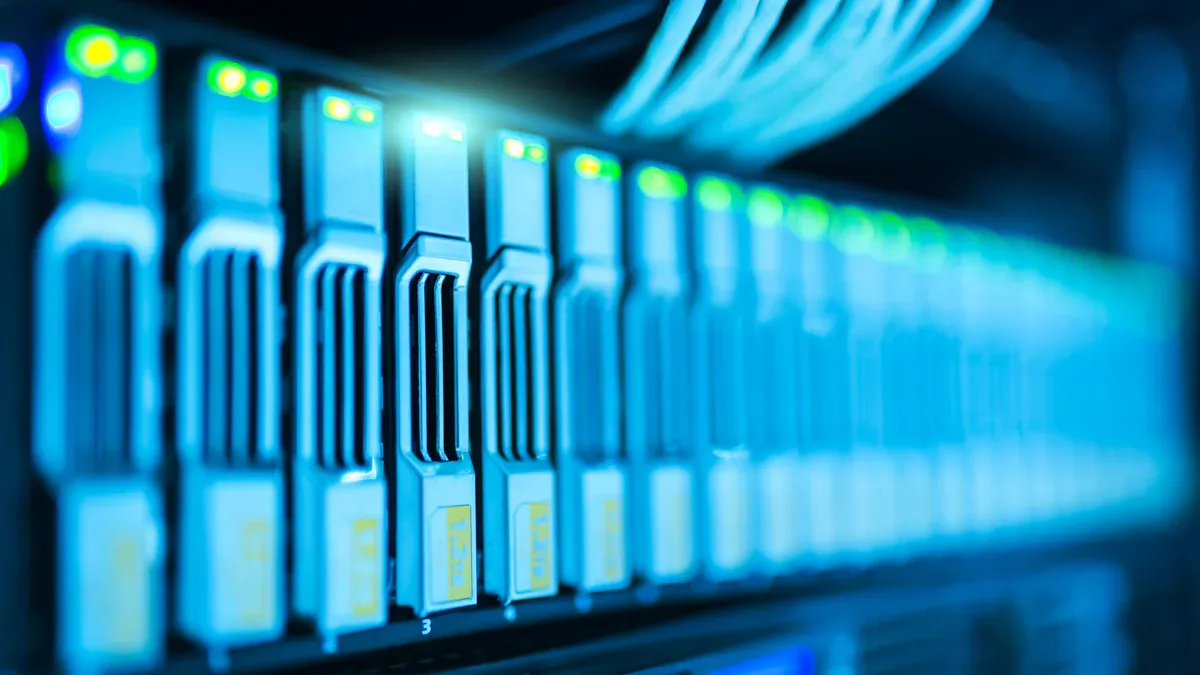

When to Choose a Server SSD
High-performance applications (e.g., databases, virtualization)
Server SSDs are the go-to choice for high-performance applications. Their ability to deliver high-speed data access makes them ideal for workloads like databases, virtualization, and high-performance computing. For example, enterprise SSDs with PCIe interfaces can achieve capacities of up to 61.44TB, ensuring both speed and storage for demanding tasks. These drives excel in environments where rapid data retrieval and processing are critical.
Drive Type | Form Factor | Maximum Capacity | Common Use Case |
|---|---|---|---|
Enterprise SSD | PCIe/E1.L | 61.44TB | High-performance computing |
Enterprise SSD | SAS | 30.72TB | Mission-critical applications |
SSDs also shine in scenarios requiring consistent performance under heavy workloads. Their low latency and high IOPS ensure smooth operations for transaction-heavy databases and virtual desktop infrastructures. If your workload demands speed and reliability, a server SSD is the optimal SSD solution.
Low-latency requirements (e.g., real-time analytics)
Real-time analytics and other latency-sensitive tasks benefit significantly from server SSDs. These drives provide near-instantaneous data access, with latency as low as 0.1 milliseconds. This makes them perfect for applications like financial trading platforms, where even a slight delay can impact outcomes. SSDs also maintain performance consistency, even under high-demand conditions, ensuring uninterrupted operations.
Tip: For workloads requiring low latency and high-speed data access, server SSDs are unmatched in performance.
When to Choose an HDD Server
Archival storage and backups
HDD servers are a practical choice for archival storage and backup systems. Their large capacities and low cost per terabyte make them ideal for storing vast amounts of data. For instance, enterprise HDDs in a 3.5-inch form factor can hold up to 22TB, making them suitable for mass storage and slow archival needs.
Drive Type | Form Factor | Maximum Capacity | Common Use Case |
|---|---|---|---|
Enterprise HDD | 3.5-inch | 22TB | Mass storage, archives |
Enterprise HDD | 2.5-inch | 5TB | Dense server racks |
HDDs are also effective for latency-insensitive tasks, such as backups. They provide a cost-efficient solution for businesses that prioritize capacity over speed. If your workload involves storing large datasets without frequent access, an HDD server is the right choice.
Budget-conscious setups with large storage needs
For budget-conscious setups, HDD servers offer unmatched affordability. With a price-per-terabyte ratio of $19 compared to $111 for SSDs, HDDs are the economical option for large-scale data storage. This cost advantage makes them a popular choice for businesses managing tight budgets while requiring significant storage capacity.
Note: HDD servers are best suited for scenarios where cost savings outweigh the need for high-speed performance.
Hybrid Server Storage Solutions
Combining SSDs and HDDs for optimal performance and cost
Hybrid server storage solutions combine the strengths of SSDs and HDDs to deliver both performance and capacity. By integrating SSDs for frequently accessed data and HDDs for archival purposes, hybrid systems optimize cost and performance. These configurations ensure low latency and high throughput while maintaining significant storage capacity.
Feature | Description |
|---|---|
Combines HDDs and SSDs | Integrates both types into a single system for optimized performance. |
Low latency and high throughput | Ensures fast data access and transfer rates. |
High-Capacity | Offers significant storage capacity for large data needs. |
Performance and Capacity | Combines SSD speed with HDD capacity for efficient data management. |
Hybrid systems are scalable and flexible, with configurations ranging from 20 to 77 bays. They also support hot-swappable storage, allowing you to replace drives without downtime. This makes them an excellent choice for businesses seeking a balance between performance and cost.
Examples of hybrid configurations in servers
Hybrid configurations are increasingly popular in modern server environments. For example, a hybrid setup might use SSDs for caching and HDDs for long-term storage. This approach ensures that frequently accessed data benefits from SSD speed, while less critical data resides on cost-effective HDDs. Businesses can also implement clustering capabilities in hybrid systems to enhance reliability and availability.


Tip: Hybrid storage solutions are ideal for businesses looking to optimize their data storage strategies without compromising on performance or cost.
SSDs and HDDs each bring distinct advantages to server storage. SSDs excel in performance-critical workloads, offering faster read/write speeds and lower latency. Their advanced design enhances reliability, making them ideal for applications requiring consistent performance and data integrity. Over time, SSDs reduce operational costs through lower energy consumption and increased efficiency, making them a cost-effective choice for data centers.
HDDs, on the other hand, provide unmatched affordability for large-scale storage needs. Their high capacity and lower price per gigabyte make them suitable for archival storage and backups. While HDDs have higher operational costs due to mechanical components, they remain a practical option for budget-conscious setups.
Choosing between SSDs and HDDs depends on your workload requirements. If your priority is reliability and performance, SSDs are the better choice. For cost-effective, high-capacity storage, HDDs offer a dependable solution. Evaluate your server needs carefully to make the best decision for your business.
FAQ
What is the main difference between SSD and HDD in servers?
SSDs use flash memory for storage, while HDDs rely on spinning disks. This difference makes SSDs faster and more reliable. HDDs, however, offer larger storage capacities at a lower cost. Your choice depends on whether you prioritize speed or affordability.
How do I decide if an SSD server is right for my workload?
Choose an SSD server if your workload requires high performance, low latency, or frequent data access. Applications like databases, virtualization, and real-time analytics benefit significantly from SSDs. Evaluate your performance needs to make the best decision.
Are SSD servers more reliable than HDD servers?
Yes, SSD servers are more reliable. SSDs have no moving parts, reducing the risk of mechanical failure. They also handle temperature fluctuations better. For high-demand environments, SSD servers provide greater durability and consistent performance.
Can I combine SSDs and HDDs in a single server?
Yes, hybrid server storage solutions allow you to combine SSDs and HDDs. Use SSDs for frequently accessed data and HDDs for archival storage. This setup balances performance and cost, making it ideal for diverse workloads.
Why are SSD servers more expensive than HDD servers?
SSDs cost more because they use advanced flash memory technology. Their higher speed, reliability, and energy efficiency justify the price. While HDDs are cheaper, SSD servers offer better long-term value for performance-critical tasks.
How long do SSDs and HDDs last in servers?
SSDs typically last up to 10 years, while HDDs last 3–5 years. SSDs have a lower failure rate due to their lack of moving parts. For long-term reliability, SSD servers are a better choice.
Do SSD servers consume less power than HDD servers?
Yes, SSD servers are more energy-efficient. SSDs consume less power during both idle and active states. This efficiency reduces operational costs and makes SSD servers a sustainable option for modern data centers.
Are SSD servers suitable for large-scale storage?
Yes, modern SSD servers can handle large-scale storage. Some enterprise SSDs offer capacities up to 61.44TB. While HDDs remain cost-effective for massive storage, SSDs are increasingly viable for high-capacity needs.


